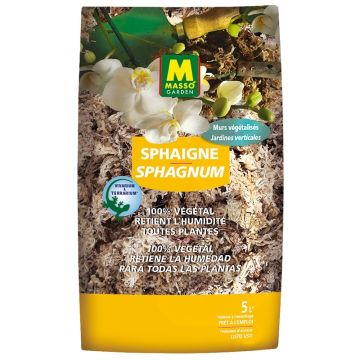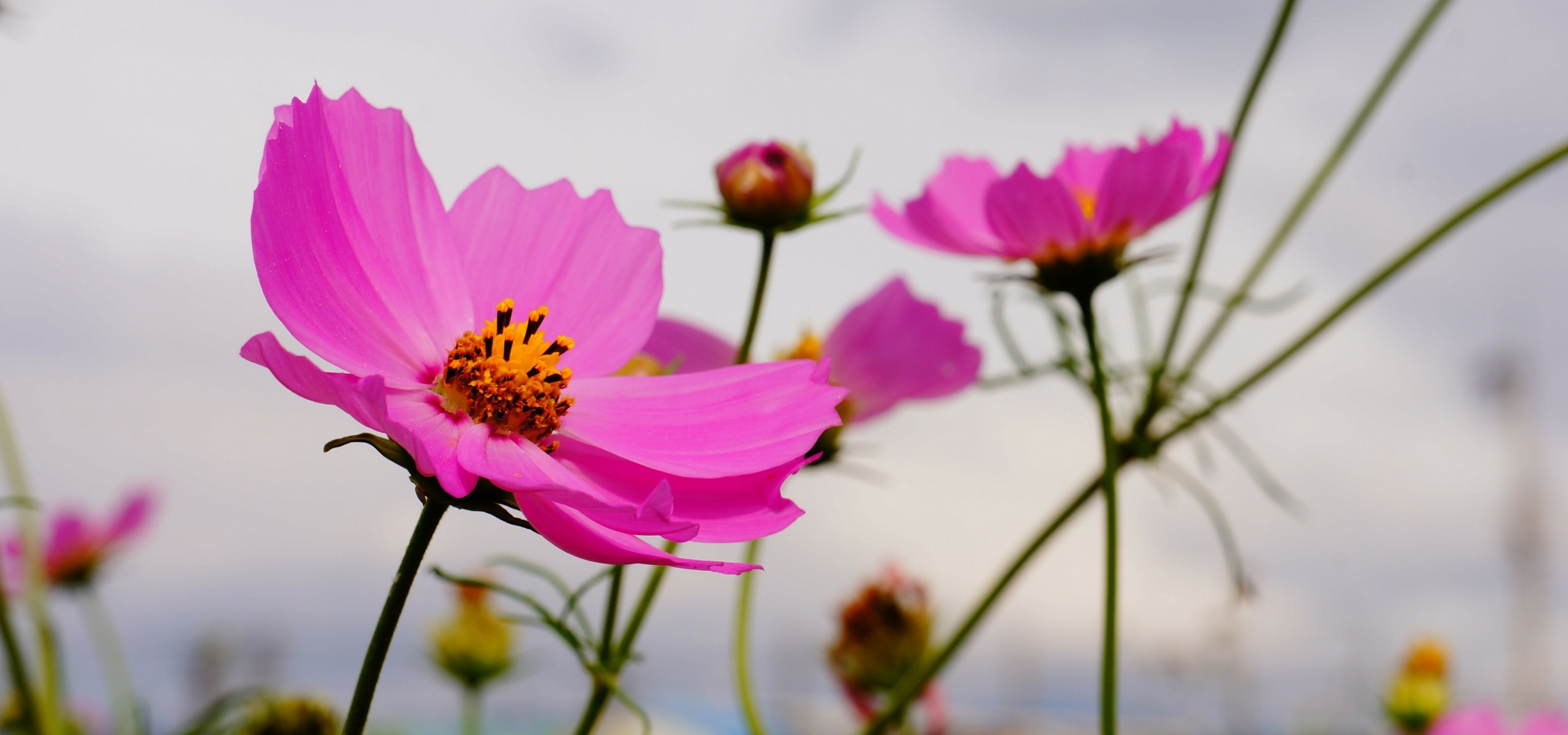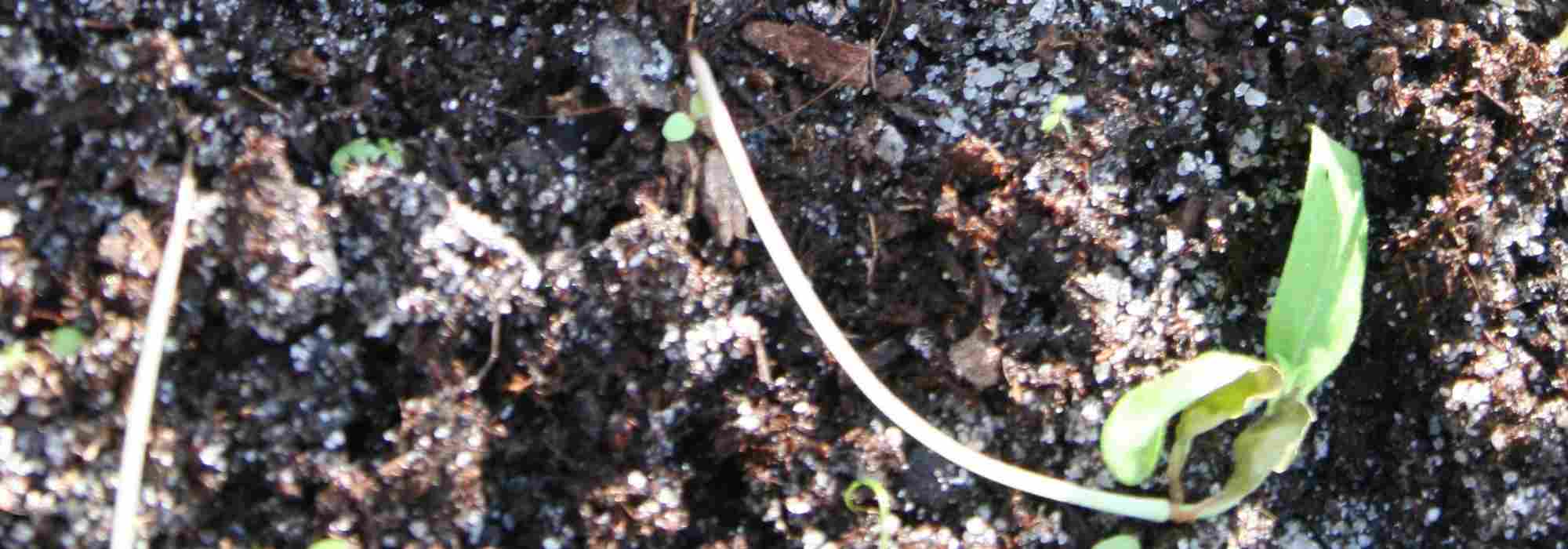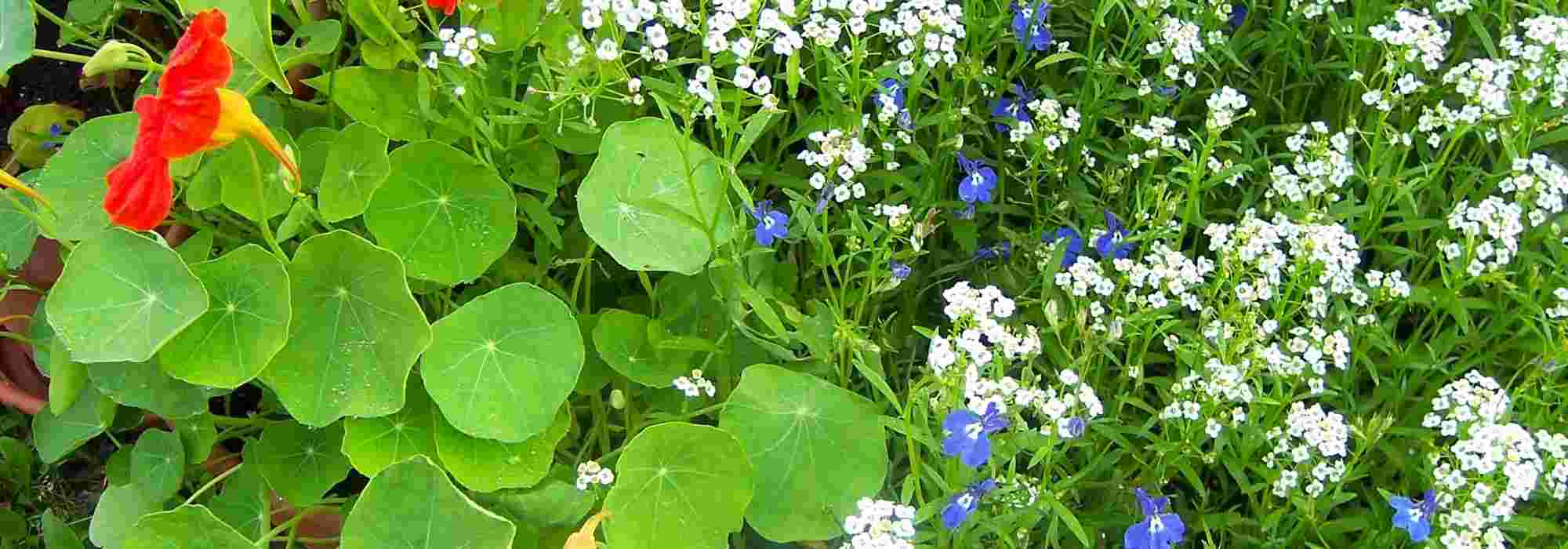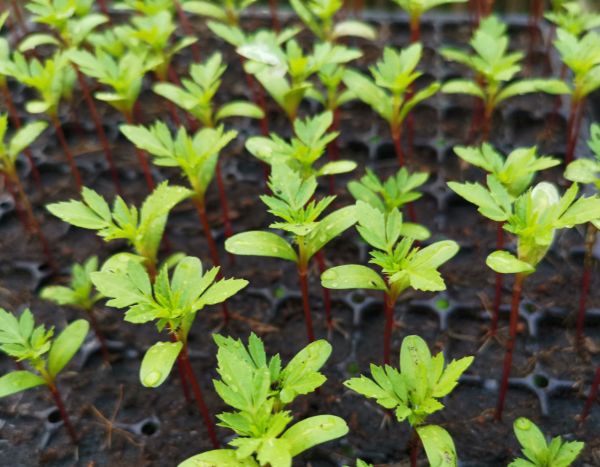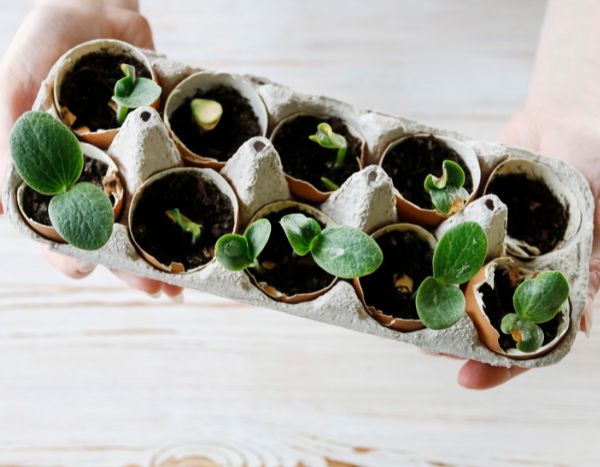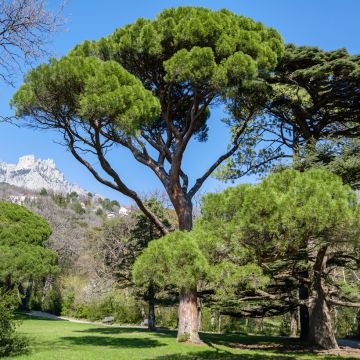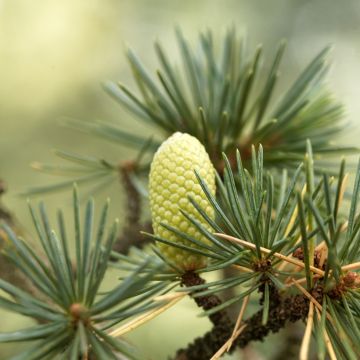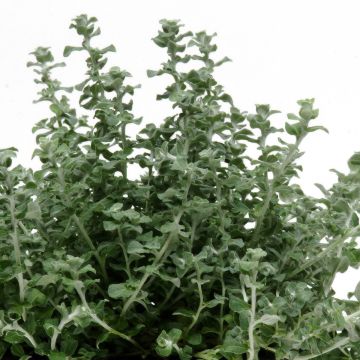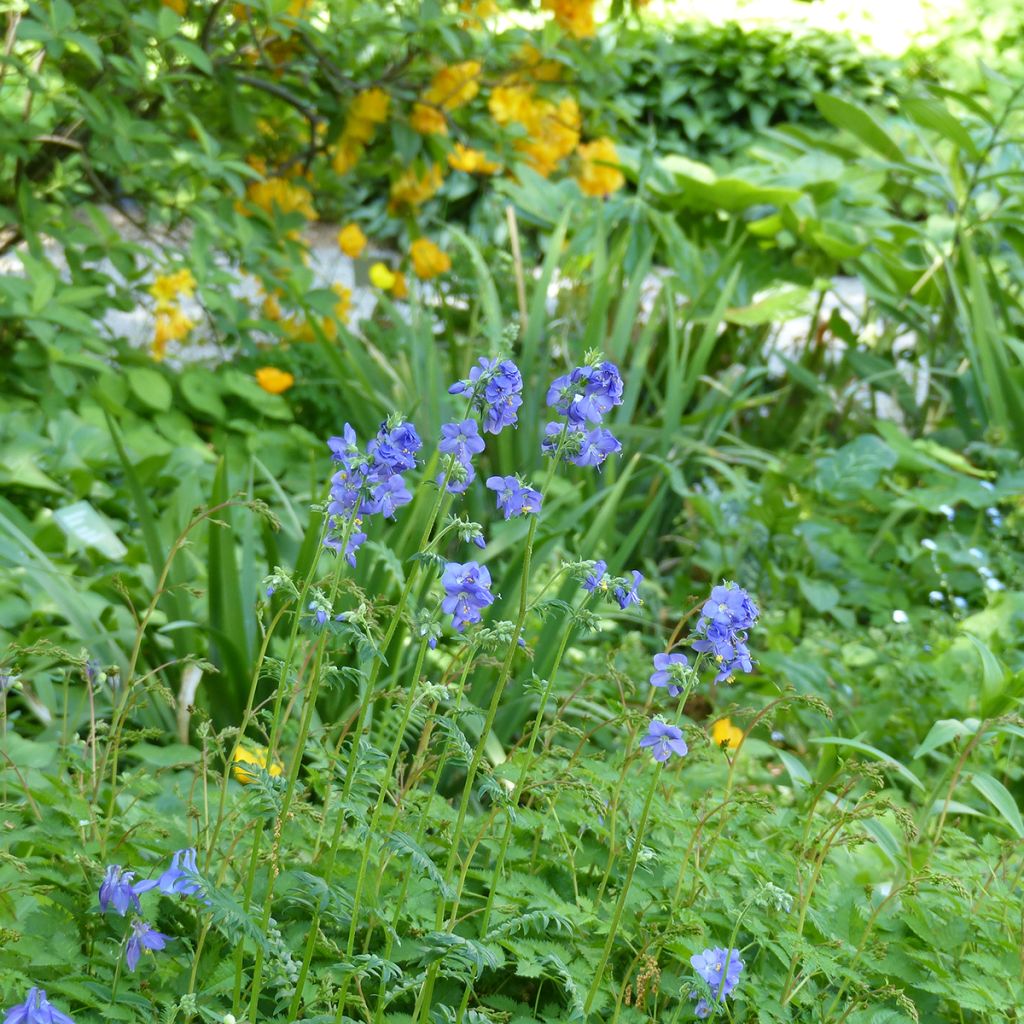

Polemonium caeruleum Blue Pearl seeds - Jacob's ladder
Polemonium caeruleum Blue Pearl seeds - Jacob's ladder
Polemonium caeruleum Blue Pearl
Jacob's Ladder, Greek Valerian
Special offer!
Receive a €20 voucher for any order over €90 (excluding delivery costs, credit notes, and plastic-free options)!
1- Add your favorite plants to your cart.
2- Once you have reached €90, confirm your order (you can even choose the delivery date!).
3- As soon as your order is shipped, you will receive an email containing your voucher code, valid for 3 months (90 days).
Your voucher is unique and can only be used once, for any order with a minimum value of €20, excluding delivery costs.
Can be combined with other current offers, non-divisible and non-refundable.
Home or relay delivery (depending on size and destination)
Schedule delivery date,
and select date in basket
This plant carries a 6 months recovery warranty
More information
We guarantee the quality of our plants for a full growing cycle, and will replace at our expense any plant that fails to recover under normal climatic and planting conditions.
Would this plant suit my garden?
Set up your Plantfit profile →
Description
Polemonium caeruleum 'Blue Pearl' is a compact variety of Jacob's Ladder, also known as Greek Valerian, remarkable for its azure blue spring flowering. This bushy perennial has charming, finely divided foliage, similar to that of ferns. In borders, naturalistic gardens, or partially shaded areas, it appreciates moist, well-drained soil. This soft, poetic blue polemonium is robust, easy to grow and undemanding.
Polemonium caeruleum 'Blue Pearl' belongs to the Polemoniaceae family. Native to temperate regions of Europe and Asia, the species is naturally found in damp meadows, forest edges and mountainous areas.
The 'Blue Pearl' cultivar was selected for its abundant flowering and reduced size. This plant reaches a height of 30 to 60 cm and spreads 30 to 45 cm wide. It has a bushy and supple habit. The growth is moderate and flowering generally occurs from the second year after sowing. The upright stems bear clusters of campanulate azure blue flowers at their tips, measuring about 2.5 cm in diameter, with a light centre and yellow anthers. The flowering extends from May to June, sometimes until July, depending on the climate. The foliage is deciduous; it disappears in winter and re-emerges from the ground the following spring. It is compound with alternate, pinnate leaves, with bright green, oblong leaflets.
Polemonium 'Blue Pearl' is hardy down to -20°c but does not tolerate periods of prolonged drought or intense summer heat. The plant can self-seed spontaneously and is easily divided in spring.
The blue polemonium 'Blue Pearl' proves to be an excellent perennial for the damp, natural corners of the garden. More compact than the 'Lambrook Mauve’ variety, it fits well in the front or heart of beds, at the foot of old-fashioned roses or on the edge of light woodland. Perfect in mixed borders or in naturalistic garden scenes, it harmonises beautifully with mid-spring to early summer blooms like late tulips, columbines or foxgloves. Its soft blue pairs particularly well with silver or bronze foliage, or with orange blooms like Geum ‘Totally Tangerine’. Placed in borders, in cool rockeries, or even in partially shaded containers, it adds a light and poetic touch thanks to its airy foliage and luminous flowering.
Flowering
Foliage
Plant habit
Botanical data
Polemonium
caeruleum
Blue Pearl
Polemoniaceae
Jacob's Ladder, Greek Valerian
Polemonium caucasicum HORT.
Cultivar or hybrid
Planting and care
Polemonium caeruleum ‘Blue Pearl’ is best sown between February and April, under heated cover (15–20 °C), in fine seed compost, kept moist but not waterlogged. Germination usually takes 20 to 30 days.
Transplant young plants into pots when they are strong enough, then plant them in the garden after the last frosts, in May.
Sowing in situ is possible, but more delicate, as emergence is slow and seedlings are sensitive to competition.
Plant in rich, moist, well-drained soil, in partial shade or gentle sun. Space the young plants about 30 cm apart to allow them to form attractive clumps. Water regularly for the first few weeks to encourage rooting, especially in hot weather. An organic mulch can help maintain soil moisture. Remove faded flowers to encourage a second flush and limit self-seeding.
Divide clumps every 3 to 4 years in spring to aerate the crown and rejuvenate it. ‘Blue Pearl’ is not very susceptible to pests but may be prone to powdery mildew if the atmosphere is too humid or confined: good air circulation will limit this risk.
Sowing period
Intended location
Planting & care advice
This item has not been reviewed yet - be the first to leave a review about it.
Similar products
Haven't found what you were looking for?
Hardiness is the lowest winter temperature a plant can endure without suffering serious damage or even dying. However, hardiness is affected by location (a sheltered area, such as a patio), protection (winter cover) and soil type (hardiness is improved by well-drained soil).

Photo Sharing Terms & Conditions
In order to encourage gardeners to interact and share their experiences, Promesse de fleurs offers various media enabling content to be uploaded onto its Site - in particular via the ‘Photo sharing’ module.
The User agrees to refrain from:
- Posting any content that is illegal, prejudicial, insulting, racist, inciteful to hatred, revisionist, contrary to public decency, that infringes on privacy or on the privacy rights of third parties, in particular the publicity rights of persons and goods, intellectual property rights, or the right to privacy.
- Submitting content on behalf of a third party;
- Impersonate the identity of a third party and/or publish any personal information about a third party;
In general, the User undertakes to refrain from any unethical behaviour.
All Content (in particular text, comments, files, images, photos, videos, creative works, etc.), which may be subject to property or intellectual property rights, image or other private rights, shall remain the property of the User, subject to the limited rights granted by the terms of the licence granted by Promesse de fleurs as stated below. Users are at liberty to publish or not to publish such Content on the Site, notably via the ‘Photo Sharing’ facility, and accept that this Content shall be made public and freely accessible, notably on the Internet.
Users further acknowledge, undertake to have ,and guarantee that they hold all necessary rights and permissions to publish such material on the Site, in particular with regard to the legislation in force pertaining to any privacy, property, intellectual property, image, or contractual rights, or rights of any other nature. By publishing such Content on the Site, Users acknowledge accepting full liability as publishers of the Content within the meaning of the law, and grant Promesse de fleurs, free of charge, an inclusive, worldwide licence for the said Content for the entire duration of its publication, including all reproduction, representation, up/downloading, displaying, performing, transmission, and storage rights.
Users also grant permission for their name to be linked to the Content and accept that this link may not always be made available.
By engaging in posting material, Users consent to their Content becoming automatically accessible on the Internet, in particular on other sites and/or blogs and/or web pages of the Promesse de fleurs site, including in particular social pages and the Promesse de fleurs catalogue.
Users may secure the removal of entrusted content free of charge by issuing a simple request via our contact form.
The flowering period indicated on our website applies to countries and regions located in USDA zone 8 (France, the United Kingdom, Ireland, the Netherlands, etc.)
It will vary according to where you live:
- In zones 9 to 10 (Italy, Spain, Greece, etc.), flowering will occur about 2 to 4 weeks earlier.
- In zones 6 to 7 (Germany, Poland, Slovenia, and lower mountainous regions), flowering will be delayed by 2 to 3 weeks.
- In zone 5 (Central Europe, Scandinavia), blooming will be delayed by 3 to 5 weeks.
In temperate climates, pruning of spring-flowering shrubs (forsythia, spireas, etc.) should be done just after flowering.
Pruning of summer-flowering shrubs (Indian Lilac, Perovskia, etc.) can be done in winter or spring.
In cold regions as well as with frost-sensitive plants, avoid pruning too early when severe frosts may still occur.
The planting period indicated on our website applies to countries and regions located in USDA zone 8 (France, United Kingdom, Ireland, Netherlands).
It will vary according to where you live:
- In Mediterranean zones (Marseille, Madrid, Milan, etc.), autumn and winter are the best planting periods.
- In continental zones (Strasbourg, Munich, Vienna, etc.), delay planting by 2 to 3 weeks in spring and bring it forward by 2 to 4 weeks in autumn.
- In mountainous regions (the Alps, Pyrenees, Carpathians, etc.), it is best to plant in late spring (May-June) or late summer (August-September).
The harvesting period indicated on our website applies to countries and regions in USDA zone 8 (France, England, Ireland, the Netherlands).
In colder areas (Scandinavia, Poland, Austria...) fruit and vegetable harvests are likely to be delayed by 3-4 weeks.
In warmer areas (Italy, Spain, Greece, etc.), harvesting will probably take place earlier, depending on weather conditions.
The sowing periods indicated on our website apply to countries and regions within USDA Zone 8 (France, UK, Ireland, Netherlands).
In colder areas (Scandinavia, Poland, Austria...), delay any outdoor sowing by 3-4 weeks, or sow under glass.
In warmer climes (Italy, Spain, Greece, etc.), bring outdoor sowing forward by a few weeks.
































